Dealing with crows on your property and wondering how to get rid of crows? These intelligent black birds can quickly become nuisance pests, causing damage to property and crops while creating noise disturbances. This guide will walk you through effective, humane methods to keep crows away using proven deterrents and repellents that actually work.
Quick Picks: Best Crow Control Products

Editor’s Choice

Budget Pick
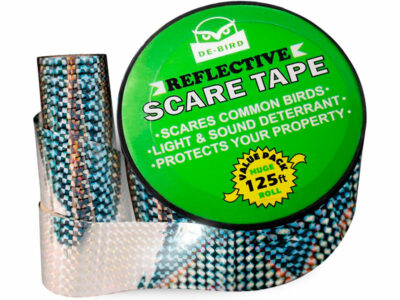
Most Versatile
Understanding Crows: Know Your Target
 Crows are among the most intelligent birds in North America, with remarkable problem-solving abilities and excellent memory. These jet-black birds with distinctive hoarse calls can be found in nearly every habitat across the continent, from urban areas to farmlands.
Crows are among the most intelligent birds in North America, with remarkable problem-solving abilities and excellent memory. These jet-black birds with distinctive hoarse calls can be found in nearly every habitat across the continent, from urban areas to farmlands.
Crow Biology and Behavior
Understanding crow behavior is essential to effectively control them. Their intelligence makes traditional scare tactics less effective over time as they quickly learn to recognize harmless deterrents.
- Lifespan: Crows can live up to 20 years in the wild, meaning they have plenty of time to learn and adapt to control methods.
- Social Structure: Crows form large communal roosts during non-breeding seasons, with gatherings ranging from 200 to thousands of birds.
- Diet: These omnivorous birds eat virtually anything, including seeds, fruits, insects, small animals, eggs, and carrion.
- Memory: Crows can recognize and remember human faces, and will even teach other crows which humans have threatened them.
Why Crows Become a Problem
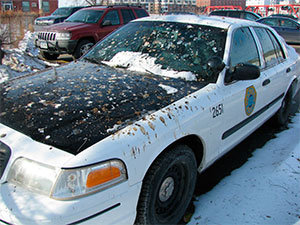
While crows serve important ecological functions, they can quickly become a nuisance when they establish themselves on your property. Common problems include:
Garbage Raiding
Crows scatter trash in search of food, creating messes in yards and driveways.
Noise Disturbances
Large crow roosts can create significant noise pollution, especially at dawn and dusk.
Crop Damage
Crows can devastate agricultural fields, particularly corn and fruit crops.
Droppings
Crow waste can damage property, vehicles, and create unsanitary conditions.
How to Get Rid of Crows: 7 Effective Methods
The most successful crow control strategies involve multiple approaches used together. Because of crows’ intelligence, they quickly adapt to single deterrent methods, making a combination approach most effective.
1. Motion-Activated Sprinklers
Orbit Yard Enforcer Motion-Activated Sprinkler
Editor's ChoiceHow Does It Work
How to Use
- Connect the sprinkler to your garden hose in areas where crows frequently visit
- Adjust the sensitivity settings based on your specific needs
- Position multiple units for larger areas requiring protection
- Periodically relocate the sprinkler to prevent crows from adapting to its presence
- Humane method that doesn't harm birds
- Effective against multiple pest animals (deer, raccoons, etc.)
- Also waters your lawn or garden
- Motion sensor conserves water by only activating when needed
- Requires access to water and hose connection
- May not be practical during freezing temperatures
- Battery requires periodic replacement
2. Visual Deterrents: Predator Balloons
Bird Repellent Balloons
Budget PickHow Does It Work
How to Use
- Hang the balloons in areas frequented by crows
- Position them where they will catch wind and natural light
- Install at varying heights for maximum effectiveness
- Relocate periodically to prevent crows from becoming habituated
- Affordable and easy to implement
- Requires no electricity or batteries
- Safe and humane
- Effective against multiple bird species
- Effectiveness decreases over time as birds may habituate
- Requires periodic relocation
- Not ideal for windless areas
3. Reflective Scare Tape
Reflective Scare Tape
Most VersatileHow Does It Work
How to Use
- Hang strips of tape at varying lengths around the area you want to protect
- Secure one end while allowing the strip to move freely in the wind
- Install in areas that receive good sunlight for maximum reflective effect
- Combine with other deterrents for enhanced effectiveness
- Extremely cost-effective solution
- Easy to install in various locations
- Works in both visual and auditory ways
- Weather-resistant and durable
- Less effective on calm, windless days
- May lose effectiveness over time without repositioning
- Not aesthetically pleasing in decorative garden areas
4. 360° Bird Repeller
 The Bird-B-Gone RPL360 is a spinning visual deterrent featuring reflective “predator eyes” that uses wind power to create an unpredictable, moving threat that crows avoid. The constant motion prevents crows from becoming accustomed to its presence.
The Bird-B-Gone RPL360 is a spinning visual deterrent featuring reflective “predator eyes” that uses wind power to create an unpredictable, moving threat that crows avoid. The constant motion prevents crows from becoming accustomed to its presence.
This device is ideal for installation on boats, docks, light posts, and other elevated areas where crows frequently perch. The wind-powered operation means no batteries or electricity are required, making it a maintenance-free solution for ongoing crow control.
5. Shock Tape Deterrent System
 For persistent crow problems on specific surfaces like ledges, rooflines, and railings, a shock tape system provides an effective deterrent. This low-profile electrical track delivers a mild, harmless shock when crows attempt to land, teaching them to avoid the area.
For persistent crow problems on specific surfaces like ledges, rooflines, and railings, a shock tape system provides an effective deterrent. This low-profile electrical track delivers a mild, harmless shock when crows attempt to land, teaching them to avoid the area.
The system can be installed on virtually any surface where crows regularly perch. While more involved to install than other deterrents, shock tape provides one of the most reliable long-term solutions for problematic roosting areas.
6. Liquid Bird Repellents
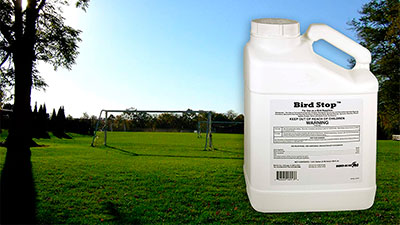 Taste aversion products like Bird Stop create an invisible barrier that irritates crows’ trigeminal systems without harming them. These non-toxic repellents can be applied to surfaces where crows land or to areas they damage.
Taste aversion products like Bird Stop create an invisible barrier that irritates crows’ trigeminal systems without harming them. These non-toxic repellents can be applied to surfaces where crows land or to areas they damage.
Liquid repellents are effective for treating agricultural crops, lawns, rooftops, and structures. They work by making the treated area uncomfortable for crows while remaining safe for humans, pets, and plants when used as directed.
7. Ultrasonic Repellers
 Ultrasonic devices emit high-frequency sound waves that are uncomfortable for crows but inaudible to humans. The Yard Sentinel creates an audio environment that crows find distressing, encouraging them to seek quieter areas.
Ultrasonic devices emit high-frequency sound waves that are uncomfortable for crows but inaudible to humans. The Yard Sentinel creates an audio environment that crows find distressing, encouraging them to seek quieter areas.
These devices are ideal for patios, driveways, gardens, and other areas where a silent solution is preferred. Many models feature motion sensors to conserve power and increase effectiveness by creating an unpredictable response when crows approach.
Implementing an Effective Crow Control Strategy
For maximum effectiveness in deterring crows from your property, follow these strategic guidelines:
- Combine multiple deterrent typesUse visual, auditory, and physical deterrents together rather than relying on a single method.
- Rotate and relocate deterrents regularlyCrows quickly learn to ignore stationary deterrents, so change positions frequently.
- Remove food sourcesSecure garbage cans, pick up fallen fruit, and avoid feeding other wildlife that might attract crows.
- Address existing roosting sitesMake current perching areas uncomfortable with deterrents before crows establish a strong habit.
- Be persistentConsistent application of deterrents is key, especially during the first few weeks when establishing new crow-free patterns.

Secured garbage containers prevent access to food

Multiple deterrents create a more effective barrier

Protecting crops requires comprehensive approaches
Frequently Asked Questions
Are crows dangerous to humans?
No, crows are not typically dangerous to humans. They are intelligent, cautious birds that generally avoid direct contact with people. In fact, crows can be beneficial by consuming insects and pests that might otherwise damage gardens and crops.
During nesting season, crows may occasionally exhibit defensive behavior if they perceive a threat to their young, but actual attacks on humans are extremely rare.
Is it legal to control or kill crows?
Crow control regulations vary by location. In the United States, crows are protected under the Migratory Bird Treaty Act, but the U.S. Fish and Wildlife Service permits some control measures under certain circumstances. Non-lethal deterrents like those described in this article are generally legal to use.
Before implementing any lethal control methods, check with your local wildlife agency for applicable regulations and permit requirements in your area.
Why do crows gather in large groups?
Crows gather in large communal roosts, particularly during fall and winter months, for several reasons. These gatherings provide safety in numbers against predators, offer social opportunities for finding mates, and allow for information sharing about food sources.
These roosting sites can contain hundreds or even thousands of birds, which is why they can quickly become problematic when established near residential areas.
How long will it take to get rid of crows on my property?
The time required to effectively deter crows depends on several factors, including the size of the crow population, how established they are on your property, and the consistency of your control efforts. Typically, you may begin seeing results within a few days, but complete crow management may take 2-4 weeks of consistent deterrent application.
For established roosts, it may take longer and require a more comprehensive approach using multiple deterrent methods simultaneously.
Conclusion: Achieving Success in Crow Control
Effectively managing crow problems requires understanding these intelligent birds and implementing a strategic, multi-faceted approach. By combining several deterrent methods—from motion-activated sprinklers to visual deterrents and repellents—you create an uncomfortable environment that encourages crows to relocate elsewhere. In addition to these tactics, it’s essential to stay informed about the latest tools and resources available for keeping crows at bay. For instance, considering the best bird spikes of 2025 can significantly enhance your efforts, as these products are designed to prevent crows from nesting in unwanted areas without causing them harm. By integrating these advanced solutions into your strategy, you increase the likelihood of effectively managing crow populations while fostering a more peaceful coexistence.
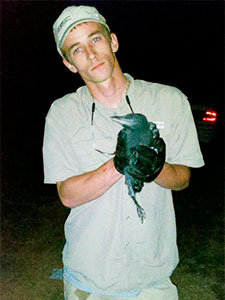
Remember that persistence is key when dealing with crows. These adaptive birds may test your deterrents repeatedly before giving up, so maintaining your control measures consistently is essential for long-term success.
With the right tools and techniques, you can successfully reclaim your property from nuisance crows while using humane methods that respect wildlife. Implement these strategies consistently, and you’ll enjoy a quieter, cleaner, crow-free environment.
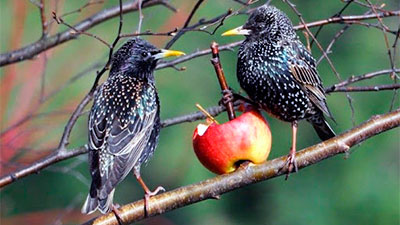
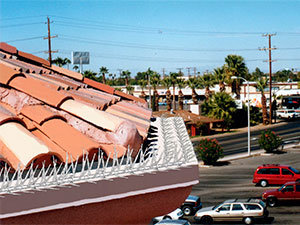


I live in UK have lovely new hanging tree for birds the crown terrorise it they threw all bird feeders on floor not happy till open and eat all food. My question is if I do any of these things will i chase of my normal birds finches, robins sparrows etc.
Hi there
I love crows.,but don t like the damage they’re doing to our vehicles..we ‘ve invested a bit in a yard sentinel / reflective tape., and a scarecrow which has I’ll effect on this one crow..
All other cars in the neighborhood go unscathed.,
Any suggestions would be much appreciated
I used a string with at least twenty aluminum stove burner liners, and cut them into triangular shapes to string them in my back yard, and two lines failed to discourage these nuisance pests. Hope they work for cursed woodpeckers who now inhabit the area, and they cause incredible damage and are a pest. We watched one hammer a home to put a dinner-size plate hole in it, and it would not leave. Too many of these problem birds do incredible costly damage, fact. Will try fake owl statutes but it might be a waste of money.